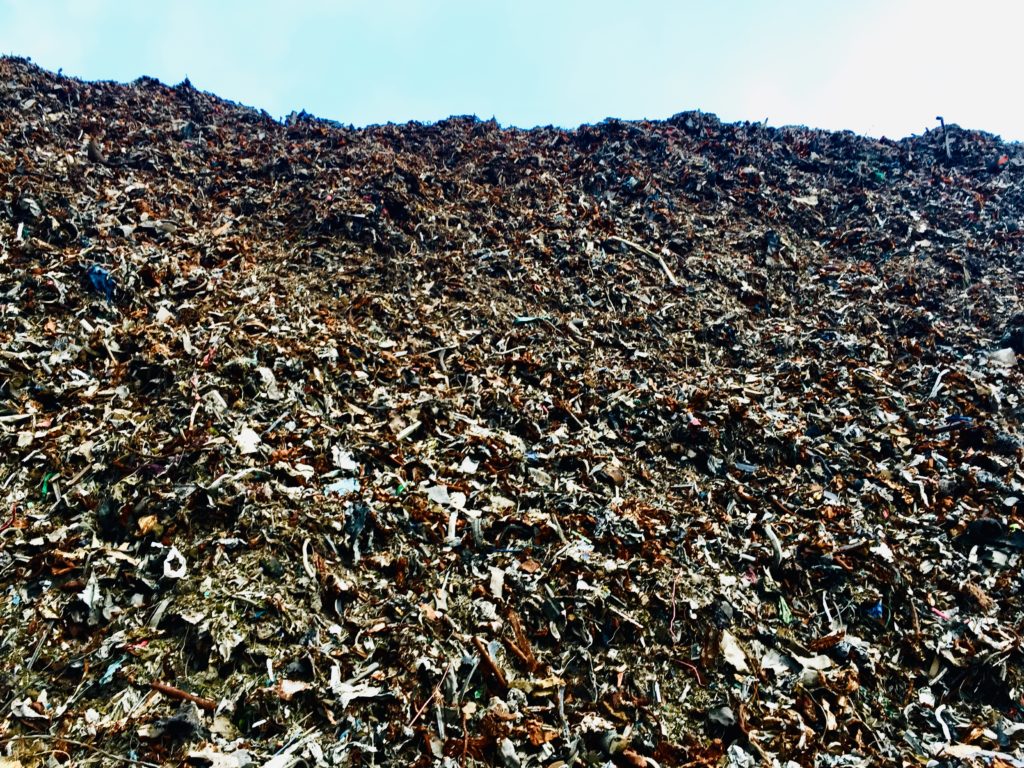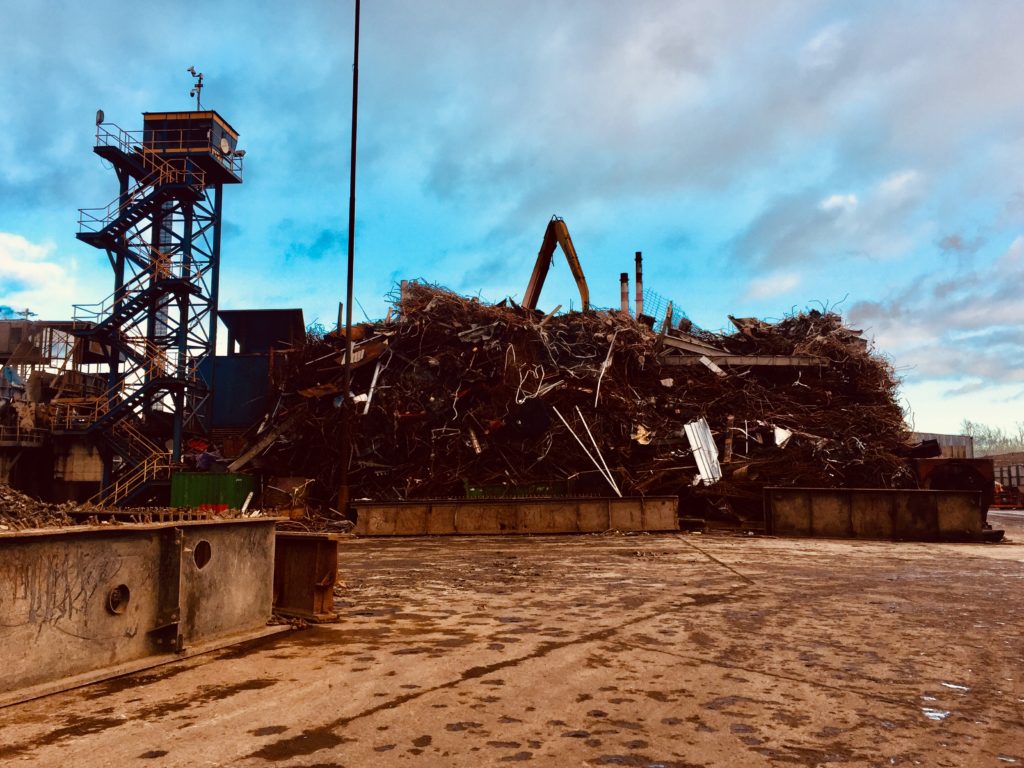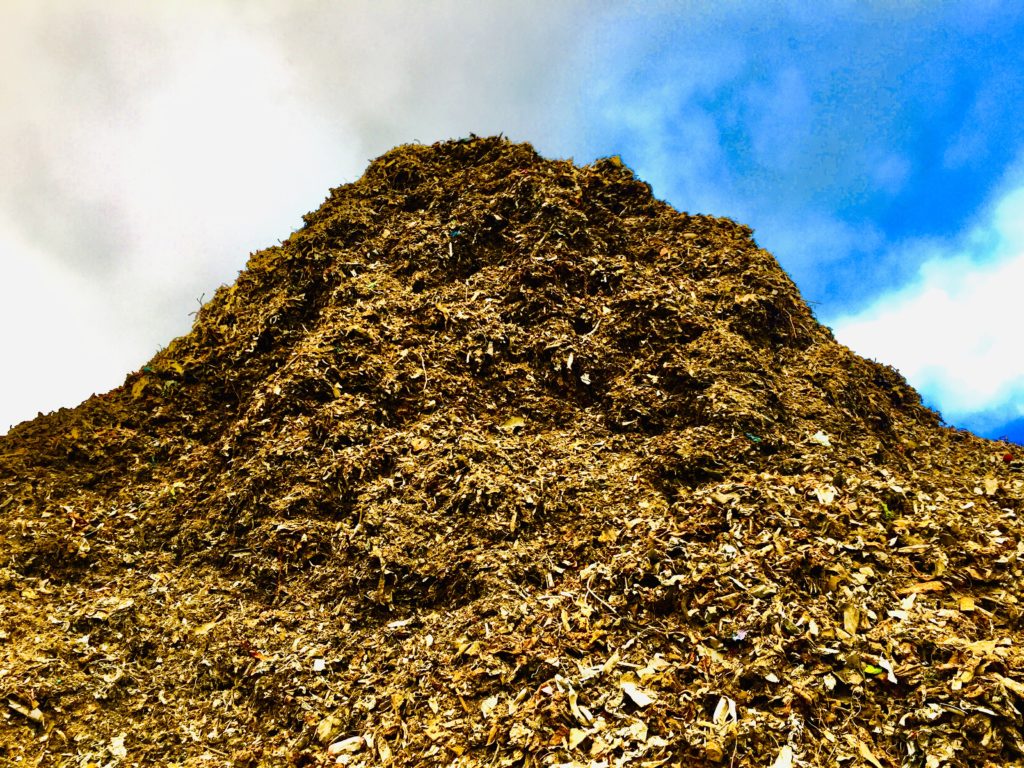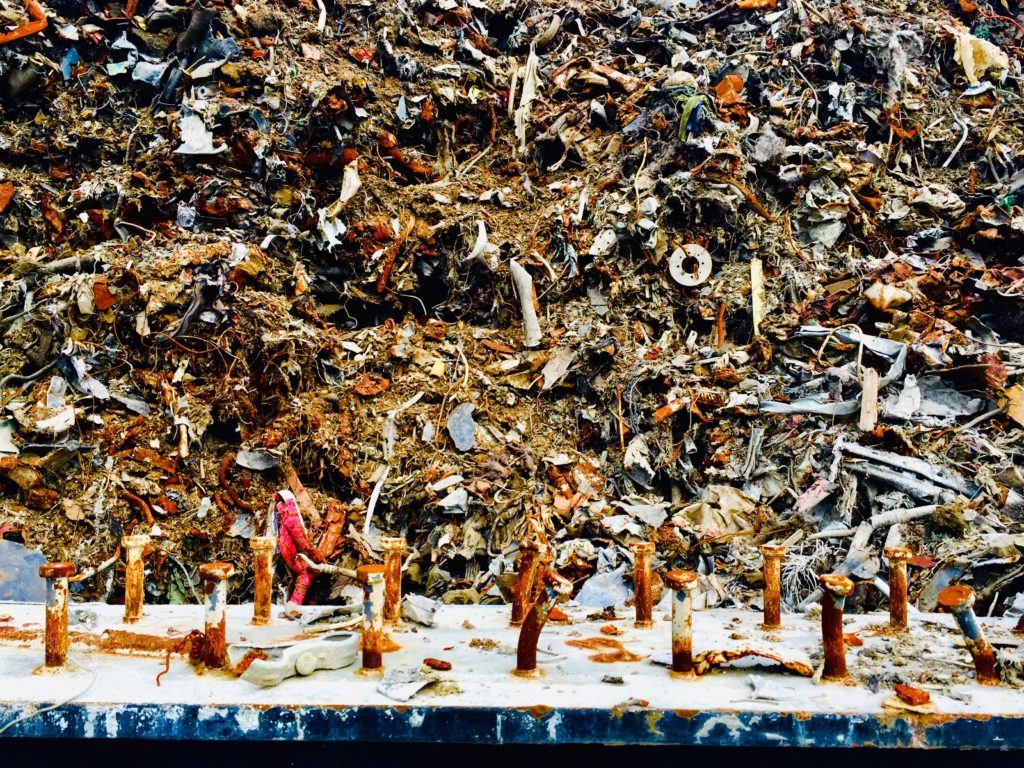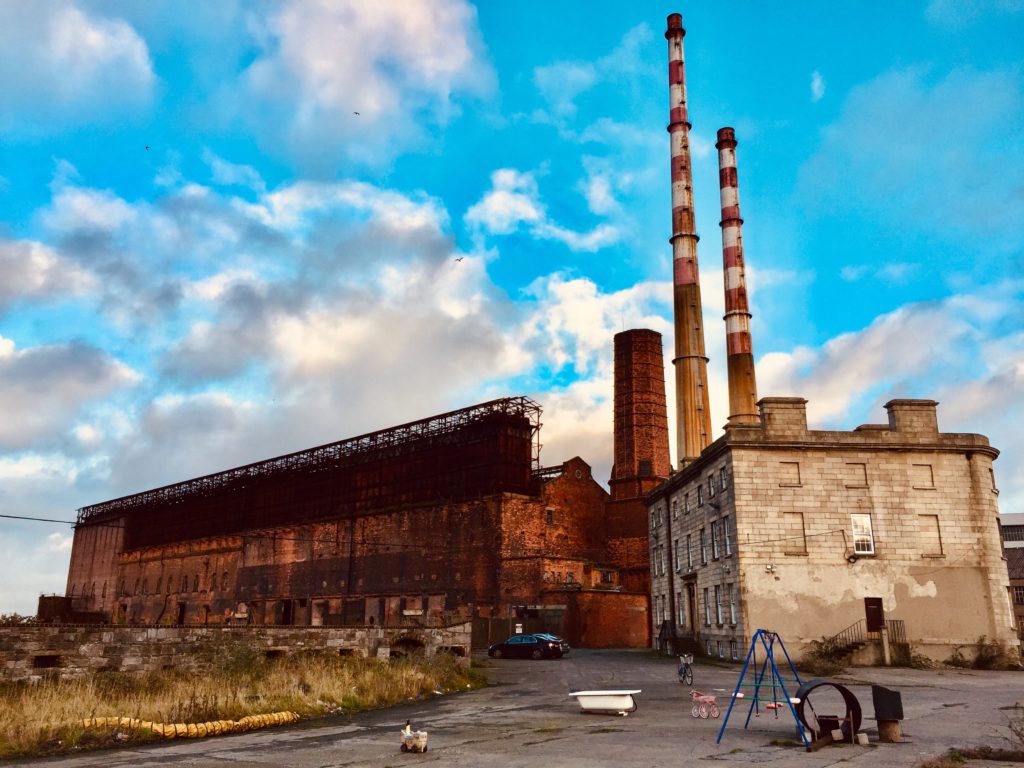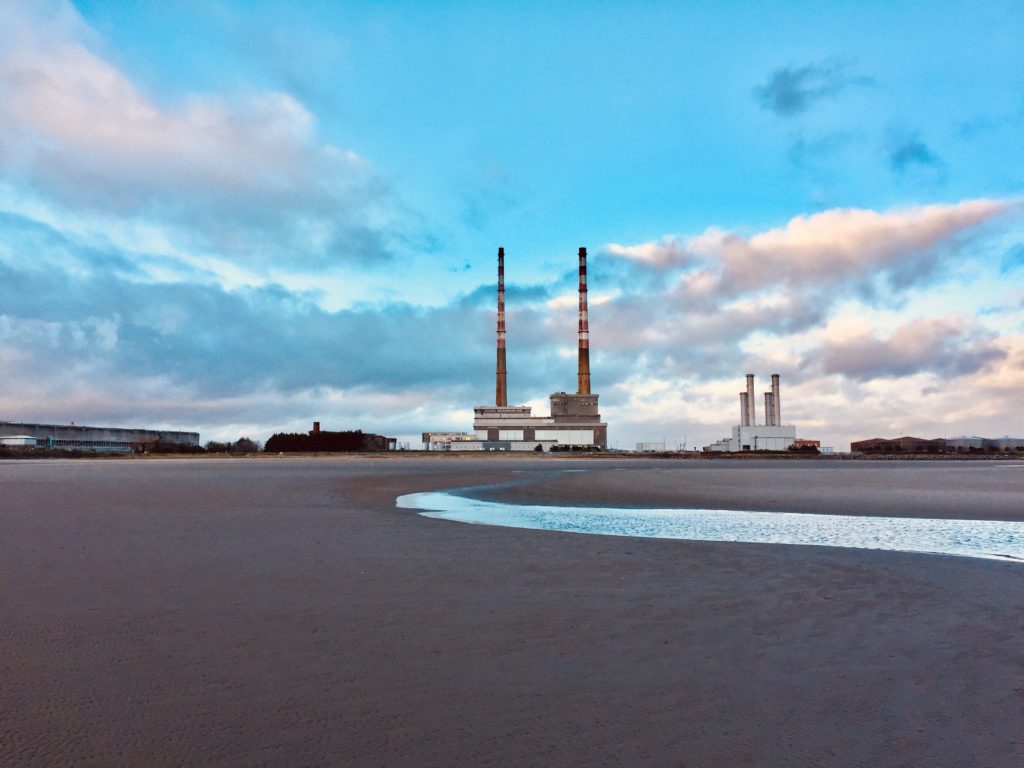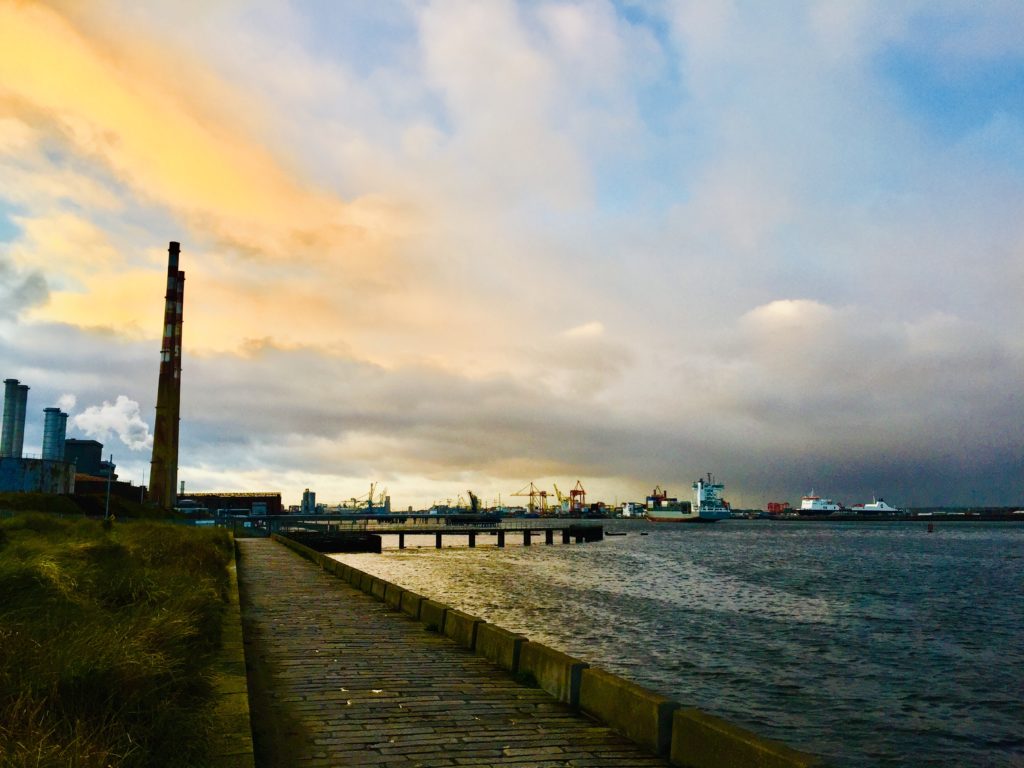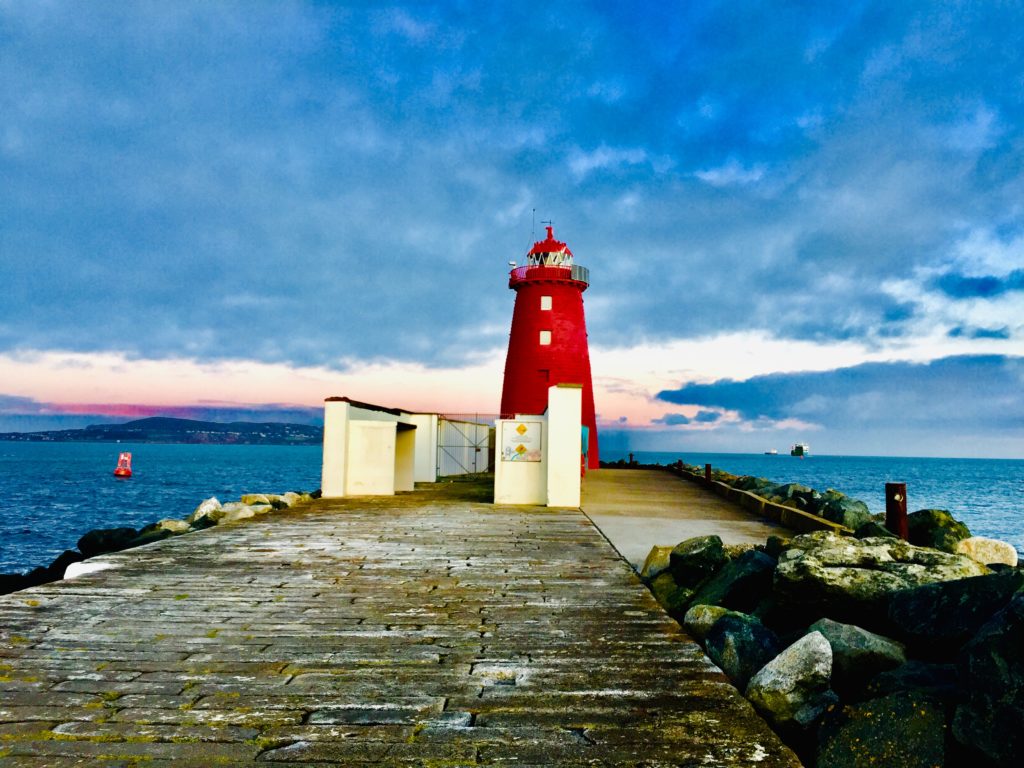Every so often I make an effort to take a walk to a Dublin neighborhood that lies outside the limits of my normal daily route straight through Dublin city center. On this particular day, I had decided to venture off towards Dublin Bay. I had long noticed on Google Maps a large peninsula jutting out into the bay, right over the horizon from the Docklands where I attend classes, but it had never occurred to me actually to go there myself. I started wandering Eastwards and quickly found myself in the heart of Dublin Port. Nothing could have prepared me for what I encountered there.
I first found myself in an enormous corridor of shipping containers as far as the eye can see. The vastness of the industrial landscape was overwhelming.
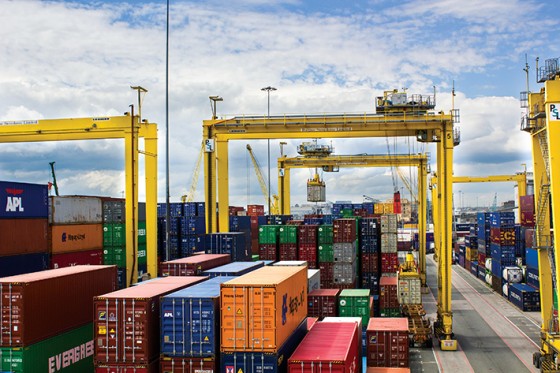
As I continued on I came upon various piles of garbage and recycling organized into categories — concrete, auto, industrial, plastic, etc. The piles themselves appeared like mountains, and from a distance, they could almost be confused for natural formations of rock and earth. At first, they seemed reminiscent of the desert landscape of Beckett’s Happy Days, or of the rolling hills of early Irish romantic poetry. Upon closer inspection, the illusion is shattered as every particular bit of rubbish can be made out and identified in detail.
I keep walking. On my right, I pass the new Dublin waste to energy plant, an enormous futuristic building with a smokestack and a large plume of what I have been assured is nothing more than water vapor. Just beyond the waste to energy plant, however, loomed the towering twin stacks of the Poolberg Power Plant. Two of the tallest structures in Dublin, I had seen them before from the city center and long wondered about them. I wander into the facility, much of which it seems has been shut down in recent years. In front of the facility is a bizarre scene: a bathtub containing a pair of moldy boots, industrial piping, and an array of abandoned children’s toys including a toddler’s swingset and stroller. It was a scene I only could have imagined in a postapocalyptic nightmare or on the set of an experimental play.
As I move on I find a vast beach that stretches out for what seems like kilometers in front of the Poolberg Stacks. I walk along this beach until I get to the end of the peninsula and happen upon the Great South Wall, a 1.5-kilometer seawall leading out to a lighthouse. I get out to the lighthouse, look back, and behind me, I am able to see the entirety of Dublin Port.
I would later learn that I was looking back at the port responsible for over 50% of Ireland’s trade. That site has an annual throughput of over 38 million tonnes. Never before had I been so aware of the industrial underbelly of any large city. I was simultaneously horrified by the endless piles of waste, mesmerized by the organizational efficiency, and awe-struck by the invisibility of the entire process. It occurred to me that most Dubliners, myself included, are probably completely unaware of the cities supply chains and power sources. As a theatre director and art student, I was also captivated by the aesthetics of industrial landscapes. These industrial spaces occupy a vastness that in a certain sense mimics the vastness of the natural, geological beauty of Ireland’s West Coast. The experience was, as silly as it may sound, in many ways sublime. I became aware of myself, and my smallness, as an individual in a new way–and I was compelled to know, and come to know, the spaces I inhabit a little bit better.

